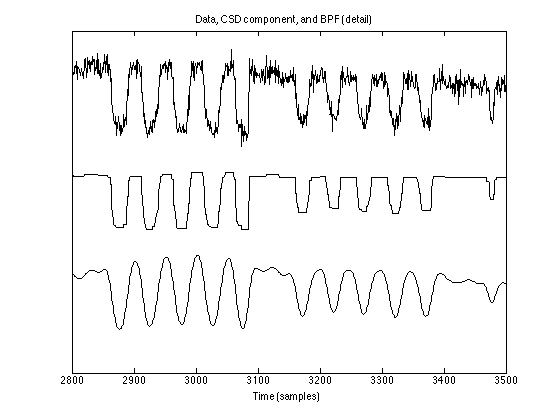LPFCSD_Example_2
This example illustrates the LPF/CSD algorithm: simultaneous low-pass filtering (LPF) and compound sparsity denoising (CSD). The LPF/CSD algorithm is used to filter near infrared spectroscopic (NIRS) time series data.
The main parameters are:
- d : Low-pass filter order = 2d
- fc : Low-pass filter cut-off frequency (in cycles/sample)
- lam0, lam1 : regularization parameters
Ivan Selesnick, Polytechnic Institute of NYU, June 2012
Contents
Start
clear close all printme = @(filename) print('-dpdf', sprintf('figures/LPFCSD_Example_2_%s', filename));
Load data
y = load('NIRS_data.txt'); y = y(:); y = y - mean(y); y = y * 1e4; N = length(y); n = 1:N; figure(1) clf subplot(2,1,1) plot(y); xlim([0 N]) ylim1 = [min(y) max(y)]; ylim(ylim1) title('Data'); printme('data')
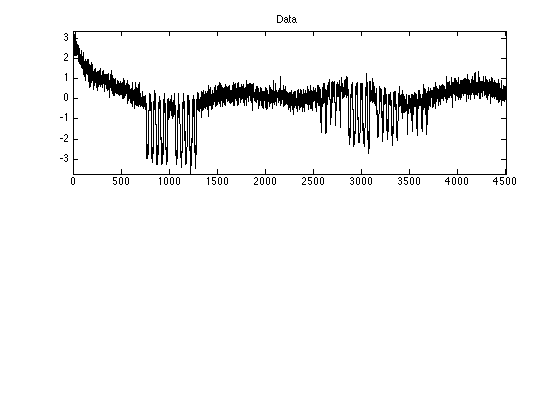
Run LPF/CSD algorithm
Run LPF/CSD algorithm to perform simultaneous low-pass filtering and compound sparsity denoising.
% Set filter parameters fc = 0.002; % fc : cut-off frequency (cycles/sample) d = 1; % d : filter order parameter (d = 1, 2, or 3) % lam0, lam1 : positive regularization parameters lam0 = 0.05; lam1 = 1; % lam0 : increasing lam0 attenuates the signal x % lam1 : increasing lam1 makes the signal x more flat (attenuates the first-order difference of x) % Decreasing both lam0 and lam1 toward zero makes the algorithm behave like a low-pass filter. Nit = 100; % Nit : number of iterations (choose N large enough so that algorithm converges) mu = 0.4; % mu : ADMM parameter % mu affects the convergence of the algorithm, but not the solution to % which it converges. [x, f, cost] = lpfcsd(y, d, fc, lam0, lam1, Nit, mu); % Run LPF/CSD algorithm txt = sprintf('fc = %.2e, lam0 = %.2e, lam1 = %.2e', fc, lam0, lam1);
Display cost function history
figure(1) clf plot(cost) title('Cost function history') xlabel('Iteration') % The cost function flattens out, indicating that the algorithm has converged.
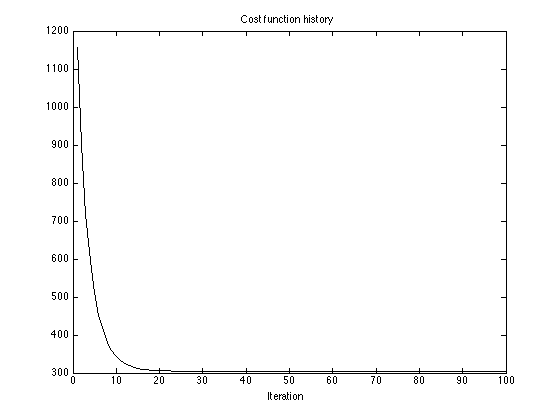
Display output of LPF/CSD
The LPF/CSD algorithm produces two output signals, denoted x and f. The output signal, x, is sparse and has a sparse deriviative. Observe that the signal x consists of the brief pulses present in the noisy data. The output signal, f, is a low-pass signal. Observe that the signal f closely follows the slowly-varying background trend present in the noisy data.
figure(2) clf subplot(2,1,1) plot(x); xlim([0 N]) title('CSD component (LPF/CSD algorithm)'); ylim(ylim1+(max(x)+min(x))/2-mean(ylim1)) subplot(2,1,2) plot(f); xlim([0 N]) title('LPF component (LPF/CSD algorithm)'); ylim(ylim1) xlabel(txt) printme('components')
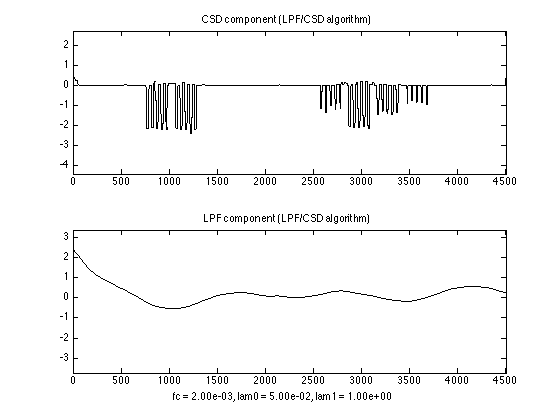
Display detail
figure(1) clf subplot(2,1,1) plot(n, y-mean(y) + 4, n, x) xlim([0 N]) xlim([2800 3500]) set(gca, 'ytick', []) title('Data & CSD component (detail)') xlabel('Time (samples)') printme('detail')

Compare with band-pass filter (BPF)
A band-pass filter is commonly used to isolate the brief pulses from the slowly varying background trend and to reduce the noise. However, observe that a band-pass filter distorts the shape of the brief pulses and exhibits a base-line drift coincident with the pulses. The LPF/CSD algorithm provides an alternative to the band-pass filter that reduces distortion and base-line drift issues.
[b2, a2] = butter(2, 0.08); % low-pass filter [b3, a3] = butter(2, 0.005, 'high'); % high-pass filter x_bpf = filtfilt(b3, a3, filtfilt(b2, a2, y) ); % perform band-pass filtering figure(2) clf subplot(2,1,1) plot(x_bpf); xlim([0 N]) title('Output of band-pass filter'); ylim(ylim1) printme('BPF')
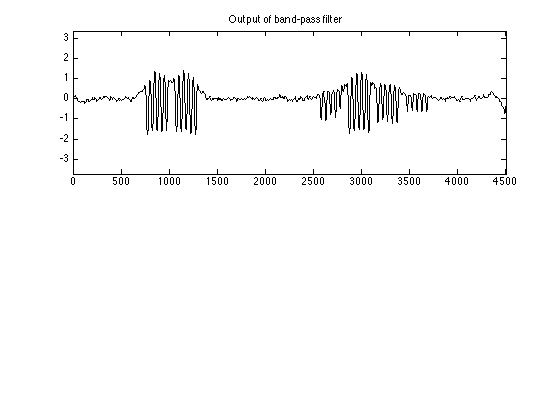
Comparison detail
% The figure shows (1) the noisy data, (2) the signal, x, produced % by the LPF/CSD algorithm, and (3) the band-pass filter output. % The band-pass filter blurs the shape of the pulses. figure(1) clf plot(n, y+4, n, x, n, x_bpf-4.5) xlim([2800 3500]) set(gca,'ytick',[]) title('Data, CSD component, and BPF (detail)'); xlabel('Time (samples)') printme('detail_BPF')
